YOLA
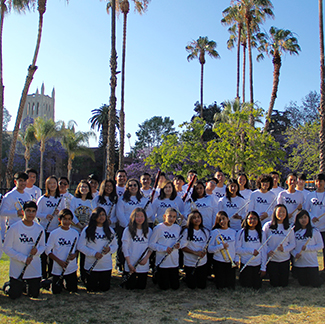
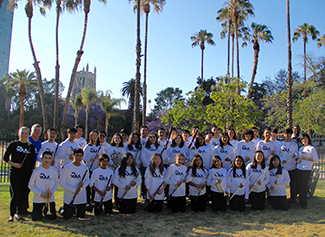 About the YOLA at HOLA Symphonic Winds
About the YOLA at HOLA Symphonic Winds
Through YOLA, the Los Angeles Philharmonic and its community partners provide free instruments, intensive music training, and academic support to students from underserved neighborhoods, empowering them to become vital citizens, leaders and agents of change. Inspired by El Sistema – the Venezuelan music education system that nurtured the LA Phil’s Music Director Gustavo Dudamel – YOLA has grown to serve more than 700 students at three sites across Los Angeles since its founding in 2007.
Comprised of 35 students ages 12 – 18, the YOLA at HOLA Symphonic Winds are founding members of YOLA at Heart of Los Angeles (HOLA). Currently, in its seventh year, the site at HOLA serves students ages 6 – 18 with intensive after-school orchestral instruction five days a week. A holistic approach fosters a sense of community and provides students with the opportunity to take advantage of HOLA’s exceptional programs and resource.
Ethan Treiman, composer
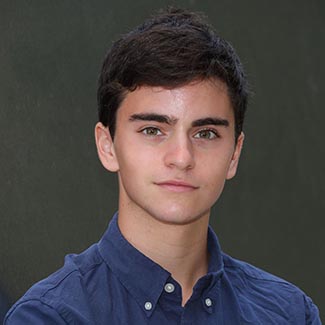
 Ethan Treiman (17) is a junior at Crossroads School for the Arts and Sciences in Santa Monica, California. He is looking forward to beginning his two year fellowship with the Los Angeles Philharmonic Composer Fellowship Program in fall, 2015. At Crossroads, he has taken courses in music theory taught by Mary Ann Cummins and Richard Grayson. Ethan is interested in musical theater and drama and has acted in several theater shows at Crossroads. He has performed with Crossroads’ 21st Street Singers Choir. Ethan draws inspiration from the music of George Gershwin, Claude Debussy, and Alberto Ginastera, along with John Williams and Stephen Sondheim. Ethan enjoys running Cross Country and Track, and hopes to one day compose music for stage and film.
Ethan Treiman (17) is a junior at Crossroads School for the Arts and Sciences in Santa Monica, California. He is looking forward to beginning his two year fellowship with the Los Angeles Philharmonic Composer Fellowship Program in fall, 2015. At Crossroads, he has taken courses in music theory taught by Mary Ann Cummins and Richard Grayson. Ethan is interested in musical theater and drama and has acted in several theater shows at Crossroads. He has performed with Crossroads’ 21st Street Singers Choir. Ethan draws inspiration from the music of George Gershwin, Claude Debussy, and Alberto Ginastera, along with John Williams and Stephen Sondheim. Ethan enjoys running Cross Country and Track, and hopes to one day compose music for stage and film.
Mark Applebaum
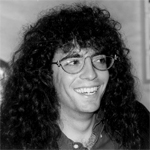 Mark Applebaum (b. 1967, Chicago) is Associate Professor of Composition and Theory at Stanford University where he served as John Philip Coghlan Fellow and received the 2003 Walter J. Gores Award for excellence in teaching. He received his Ph.D. in composition from the University of California at San Diego where he studied principally with Brian Ferneyhough. His solo, chamber, choral, orchestral, operatic, and electroacoustic work has been performed throughout the United States, Europe, Africa, and Asia.
Mark Applebaum (b. 1967, Chicago) is Associate Professor of Composition and Theory at Stanford University where he served as John Philip Coghlan Fellow and received the 2003 Walter J. Gores Award for excellence in teaching. He received his Ph.D. in composition from the University of California at San Diego where he studied principally with Brian Ferneyhough. His solo, chamber, choral, orchestral, operatic, and electroacoustic work has been performed throughout the United States, Europe, Africa, and Asia.
Carlos Chávez
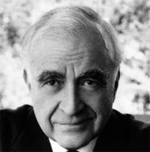 Born 13 June 1899 in Mexico City, Carlos Chávez was a renowned composer, conductor, and educator whose distinctive, often highly percussive music synthesized elements of Mexican, Indian, and Spanish-Mexican influence. A prolific writer of music and music criticism, Chávez’s oeuvre includes five ballets, seven symphonies, four concertos, a cantata and opera, and innumerable pieces for voice, piano, and chamber ensemble; he wrote two books (of which Toward A New Music: Music and Electricity became a major contribution and fundamental document of new musical thought) and more than 200 articles on music.
Born 13 June 1899 in Mexico City, Carlos Chávez was a renowned composer, conductor, and educator whose distinctive, often highly percussive music synthesized elements of Mexican, Indian, and Spanish-Mexican influence. A prolific writer of music and music criticism, Chávez’s oeuvre includes five ballets, seven symphonies, four concertos, a cantata and opera, and innumerable pieces for voice, piano, and chamber ensemble; he wrote two books (of which Toward A New Music: Music and Electricity became a major contribution and fundamental document of new musical thought) and more than 200 articles on music.
Mario Diaz de Leon
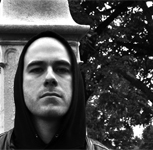 Mario Diaz de Leon has written a body of modern classical works focused on acoustic / electronic hybrids, often expressed as hypnotic walls and gestures of shimmering sound. His influences include the composers Scelsi, Ligeti, Dumitrescu, and Xenakis, free improvisation, underground metal, a wide range of electronic music, and noise / industrial music.
Mario Diaz de Leon has written a body of modern classical works focused on acoustic / electronic hybrids, often expressed as hypnotic walls and gestures of shimmering sound. His influences include the composers Scelsi, Ligeti, Dumitrescu, and Xenakis, free improvisation, underground metal, a wide range of electronic music, and noise / industrial music.
Du Yun
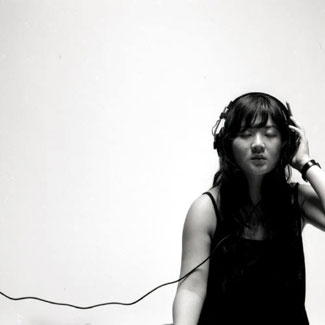
 Born and raised in Shanghai, China, currently based in NYC, Du Yun is a composer, multi-instrumentalist and performance artist. Her music exists at an artistic crossroads of orchestral, chamber music, theatre, opera, orchestral, cabaret, storytelling, pop music, visual arts and noise.
Born and raised in Shanghai, China, currently based in NYC, Du Yun is a composer, multi-instrumentalist and performance artist. Her music exists at an artistic crossroads of orchestral, chamber music, theatre, opera, orchestral, cabaret, storytelling, pop music, visual arts and noise.
Hailed by The New York Times as a leading figure in China’s new generation of composers, Du Yun’s music is championed by some of today’s finest performing artists, ensembles, orchestras and organizations.
Tan Dun
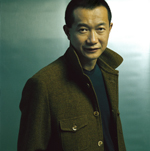 The conceptual and multifaceted composer/conductor Tan Dun has made an indelible mark on the world’s music scene with a creative repertoire that spans the boundaries of classical music, multimedia performance, and Eastern and Western traditions. A winner of today’s most prestigious honors including the Grammy Award, Oscar/Academy Award, Grawemeyer Award for classical composition and Musical America’s Composer of The Year, Bach Prize of the City of Hamburg and Moscow’s Shostakovich Award, Tan Dun’s music has been played throughout the world by leading orchestras, opera houses, international festivals, and on the radio and television.
The conceptual and multifaceted composer/conductor Tan Dun has made an indelible mark on the world’s music scene with a creative repertoire that spans the boundaries of classical music, multimedia performance, and Eastern and Western traditions. A winner of today’s most prestigious honors including the Grammy Award, Oscar/Academy Award, Grawemeyer Award for classical composition and Musical America’s Composer of The Year, Bach Prize of the City of Hamburg and Moscow’s Shostakovich Award, Tan Dun’s music has been played throughout the world by leading orchestras, opera houses, international festivals, and on the radio and television.
Julio Estrada
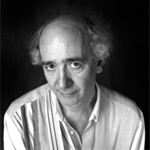 Born in Mexico City in 1943, Julio Estrada’s family was exiled from Spain in 1941. A composer, theoretician, historian, pedagogue, and interpreter, he began his musical studies in Mexico (1953-65), where he studied composition with Julián Orbón. In Paris (1965-69) he studied with Nadia Boulanger, Messiaen and attended courses and lectures of Xenakis. In Germany he studied with Stockhausen (1968) and with Ligeti (1972). He earned a Ph. D. in Musicology at Strasbourg University (1990- 1994).
Born in Mexico City in 1943, Julio Estrada’s family was exiled from Spain in 1941. A composer, theoretician, historian, pedagogue, and interpreter, he began his musical studies in Mexico (1953-65), where he studied composition with Julián Orbón. In Paris (1965-69) he studied with Nadia Boulanger, Messiaen and attended courses and lectures of Xenakis. In Germany he studied with Stockhausen (1968) and with Ligeti (1972). He earned a Ph. D. in Musicology at Strasbourg University (1990- 1994).
Mohammed Fairouz
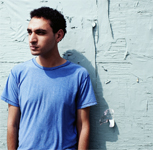 Mohammed Fairouz, born in 1985, is one of the most frequently performed, commissioned, and recorded composers of his generation. Hailed by The New York Times as “an important new artistic voice” and by BBC World News as “one of the most talented composers of his generation,” Fairouz integrates Middle-Eastern modes into Western structures, to deeply expressive effect. His large-scale works, including four symphonies and an opera, engage major geopolitical and philosophical themes with persuasive craft and a marked seriousness of purpose.
Mohammed Fairouz, born in 1985, is one of the most frequently performed, commissioned, and recorded composers of his generation. Hailed by The New York Times as “an important new artistic voice” and by BBC World News as “one of the most talented composers of his generation,” Fairouz integrates Middle-Eastern modes into Western structures, to deeply expressive effect. His large-scale works, including four symphonies and an opera, engage major geopolitical and philosophical themes with persuasive craft and a marked seriousness of purpose.
Suzanne Farrin
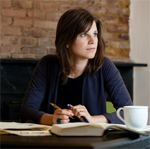 Suzanne Farrin’s music explores the interior worlds of instruments and the visceral potentialities of sound. Her music has been performed by some of the great musicians of today on stages across Europe and North and South America. Tim Page, the former classical music critic of the Washington Post wrote: “If you can imagine the dense, perfumed chords of Messiaen’s piano music combined with the clangorous, insistent, near-pictorial tone-clusters of Frederic Rzewski’s Winnsboro Cotton Mill Blues, you will have some idea of what Farrin’s work sounds like. Yet it transcends its derivations to leave the distinct impression of its own.”
Suzanne Farrin’s music explores the interior worlds of instruments and the visceral potentialities of sound. Her music has been performed by some of the great musicians of today on stages across Europe and North and South America. Tim Page, the former classical music critic of the Washington Post wrote: “If you can imagine the dense, perfumed chords of Messiaen’s piano music combined with the clangorous, insistent, near-pictorial tone-clusters of Frederic Rzewski’s Winnsboro Cotton Mill Blues, you will have some idea of what Farrin’s work sounds like. Yet it transcends its derivations to leave the distinct impression of its own.”
Morton Feldman
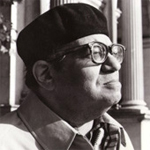 Morton Feldman was born in New York in 1926 and died there in 1987. Just like Cage, a close friend, he was an American composer – an American artist – an American in the true sense of the word.
Morton Feldman was born in New York in 1926 and died there in 1987. Just like Cage, a close friend, he was an American composer – an American artist – an American in the true sense of the word.
He identified himself by differentiating his views on composition from those of his colleagues in Europe. He was proud to be an American because he was convinced that it enabled him the freedom, unparalleled in Europe, to work unfettered by tradition.
Gabriela Lena Frank
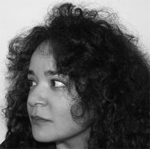 Identity has always been at the center of Gabriela Lena Frank’s music. Born in Berkeley, California, to a mother of mixed Peruvian/Chinese ancestry and a father of Lithuanian/Jewish descent, Frank explores her multicultural heritage most ardently through her compositions. Inspired by the works of Bela Bartók and Alberto Ginastera, Frank is something of a musical anthropologist. She has traveled extensively throughout South America and her pieces reflect and refract her studies of Latin American folklore, incorporating poetry, mythology, and native musical styles into a western classical framework that is uniquely her own.
Identity has always been at the center of Gabriela Lena Frank’s music. Born in Berkeley, California, to a mother of mixed Peruvian/Chinese ancestry and a father of Lithuanian/Jewish descent, Frank explores her multicultural heritage most ardently through her compositions. Inspired by the works of Bela Bartók and Alberto Ginastera, Frank is something of a musical anthropologist. She has traveled extensively throughout South America and her pieces reflect and refract her studies of Latin American folklore, incorporating poetry, mythology, and native musical styles into a western classical framework that is uniquely her own.
Alberto Ginastera
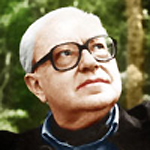 Alberto Ginastera was the leading Argentinian composer of the twentieth century, as important in giving the Argentinian folk heritage a voice in art music as Bartók was in Hungary. Ginastera was born in Buenos Aires on 11 April 1916. He studied musical privately as a child, later enrolling at the National Conservatoire of Music in his home city. His first compositions date from his early youth; he was 22 when his Piezas infantiles for piano won first prize in a competition.
Alberto Ginastera was the leading Argentinian composer of the twentieth century, as important in giving the Argentinian folk heritage a voice in art music as Bartók was in Hungary. Ginastera was born in Buenos Aires on 11 April 1916. He studied musical privately as a child, later enrolling at the National Conservatoire of Music in his home city. His first compositions date from his early youth; he was 22 when his Piezas infantiles for piano won first prize in a competition.
Vinko Globokar
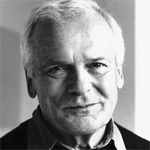 From 13 to 21 years of age Vinko Globokar lived in Ljubljana (Slovenia), where he made his debut as a jazz musician. He subsequently studied trombone at the National Conservatory in Paris (diploma in trombone and chamber music). He studied composition and conducting with René Leibowitz, counterpoint with André Hodeir, and continued his studies with Luciano Berio.
From 13 to 21 years of age Vinko Globokar lived in Ljubljana (Slovenia), where he made his debut as a jazz musician. He subsequently studied trombone at the National Conservatory in Paris (diploma in trombone and chamber music). He studied composition and conducting with René Leibowitz, counterpoint with André Hodeir, and continued his studies with Luciano Berio.
Osvaldo Golijov
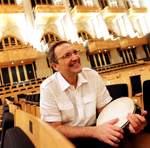 Osvaldo Golijov grew up in an Eastern European Jewish household in La Plata, Argentina. Born to a piano teacher mother and physician father, Golijov was raised surrounded by classical chamber music, Jewish liturgical and klezmer music, and the new tango of Astor Piazzolla. After studying piano at the local conservatory and composition with Gerardo Gandini he moved to Israel in 1983, where he studied with Mark Kopytman at the Jerusalem Rubin Academy and immersed himself in the colliding musical traditions of that city.
Osvaldo Golijov grew up in an Eastern European Jewish household in La Plata, Argentina. Born to a piano teacher mother and physician father, Golijov was raised surrounded by classical chamber music, Jewish liturgical and klezmer music, and the new tango of Astor Piazzolla. After studying piano at the local conservatory and composition with Gerardo Gandini he moved to Israel in 1983, where he studied with Mark Kopytman at the Jerusalem Rubin Academy and immersed himself in the colliding musical traditions of that city.
Michael Gordon
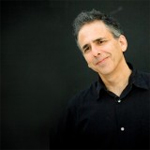 Michael Gordon’s music merges subtle rhythmic invention with incredible power embodying, in the words of The New Yorker‘s Alex Ross, “the fury of punk rock, the nervous brilliance of free jazz and the intransigence of classical modernism.”
Michael Gordon’s music merges subtle rhythmic invention with incredible power embodying, in the words of The New Yorker‘s Alex Ross, “the fury of punk rock, the nervous brilliance of free jazz and the intransigence of classical modernism.”
Over the past 25 years, Gordon has produced a strikingly diverse body of work, ranging from large-scale pieces for high-energy ensembles to major orchestral commissions to works conceived specifically for the recording studio. Transcending categorization, this music represents the collision of mysterious introspection and brutal directness.
Lei Liang
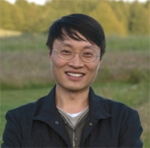 Heralded as “one of the most exciting voices in New Music” (The Wire), Lei Liang (梁雷) is a Chinese-born American composer whose works have been described as “hauntingly beautiful and sonically colorful” by The New York Times.
Heralded as “one of the most exciting voices in New Music” (The Wire), Lei Liang (梁雷) is a Chinese-born American composer whose works have been described as “hauntingly beautiful and sonically colorful” by The New York Times.
Winner of the 2011 Rome Prize, Lei Liang is the recipient of a Guggenheim Fellowship and an Aaron Copland Award. He was commissioned by the New York Philharmonic and Alan Gilbert for the inaugural concert of the CONTACT! new music series.
Olivier Messiaen
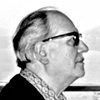 Born in 1908 in Avignon into a literary family (his father, Pierre Messiaen, was a translator and his mother, Cécile Sauvage, a poet), Olivier Messiaen was marked by the idea of language. He first devised his own language (his book Technique of My Musical Language was completed in 1943) and based it on the modality that, as a child, he had discovered in Debussy, and that he later developed at the Paris Conservatory with Paul Dukas (composition), Maurice Emmanuel (history of music) and Marcel Dupré (organ). He then created his own poetic language, from which all his vocal works issue.
Born in 1908 in Avignon into a literary family (his father, Pierre Messiaen, was a translator and his mother, Cécile Sauvage, a poet), Olivier Messiaen was marked by the idea of language. He first devised his own language (his book Technique of My Musical Language was completed in 1943) and based it on the modality that, as a child, he had discovered in Debussy, and that he later developed at the Paris Conservatory with Paul Dukas (composition), Maurice Emmanuel (history of music) and Marcel Dupré (organ). He then created his own poetic language, from which all his vocal works issue.
Roland Auzet, director
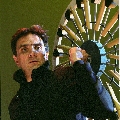 French composer, percussionist, and theater director Roland Auzet defines himself as a stage writer. An artist and performer with many interests and talents, Auzet received the Chevalier des Arts et Lettres from the French Ministry in 2007 for his remarkable body of work in contemporary music, circus, dance, opera, and theater.
French composer, percussionist, and theater director Roland Auzet defines himself as a stage writer. An artist and performer with many interests and talents, Auzet received the Chevalier des Arts et Lettres from the French Ministry in 2007 for his remarkable body of work in contemporary music, circus, dance, opera, and theater.
Maya Beiser, cello
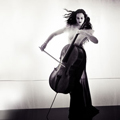
Maya Beiser has captivated audiences worldwide with her virtuosity, eclectic repertoire, and relentless quest to redefine her instrument’s boundaries. The Boston Globe declares, “With virtuoso chops, rock-star charisma, and an appetite for pushing her instrument to the edge of avant-garde adventurousness, Maya Beiser is the post-modern diva of the cello.”
CalArts Ensemble
The CalArts Sila ensemble is an outgrowth of the New Century Players: the faculty, student, and alumni ensemble in residence at CalArts for over 25 years. In various configurations, the group has played at Japan America Theater, Zipper Hall, REDCAT, the Kennedy Center, and at the Dartington Center for the Arts, England. Individual members have performed nationally and internationally as founding members of ensembles Partch (2015 Grammy winner of Best Classical Compendium for Plectra and Percussion Dances), Vir2ual Cage, Formalist Quartet, Southland Ensemble, Isaura String Quartet, and [LIMINAR]. Members also perform regularly with Kaleidoscope Chamber Orchestra, wild Up, Southwest Chamber Music, The Industry, Knoxville Symphony, Sarasota Opera, Tucson Symphony Orchestra, Blackearth Percussion Group, XTET, the Lian Ensemble, Kim Richmond Jazz Orchestra, and the LA Philharmonic.
MMDG Music Ensemble
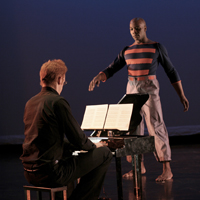
The MMDG Music Ensemble, formed in 1996, performs with the Dance Group throughout the season at home and on tour and has become integral to the company’s creative life. The core group of accomplished musicians is supplemented by a large roster of regular guests, including cellist Yo-Yo Ma and pianist Emanuel Ax. While in Brooklyn, members of the ensemble participate in the Mark Morris Dance, Music and Literacy Project in the New York City public school system.
Gloria Cheng, piano
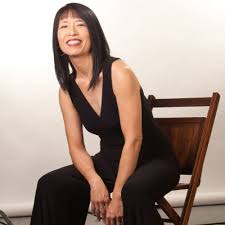 Pianist Gloria Cheng is acclaimed as a discerning artist whose performances tap the emotional core of contemporary music. In recitals that explore significant interconnections amongst composers, Cheng has been presented by the Ojai Festival, Chicago Humanities Festival, William Kapell Festival, and the Tanglewood Festival of Contemporary Music. She has appeared on leading concert series including Carnegie Hall’s Making Music, Cal Performances, St. Paul Chamber Orchestra’s Engine408, Stanford Lively Arts, and at (le) Poisson Rouge.
Pianist Gloria Cheng is acclaimed as a discerning artist whose performances tap the emotional core of contemporary music. In recitals that explore significant interconnections amongst composers, Cheng has been presented by the Ojai Festival, Chicago Humanities Festival, William Kapell Festival, and the Tanglewood Festival of Contemporary Music. She has appeared on leading concert series including Carnegie Hall’s Making Music, Cal Performances, St. Paul Chamber Orchestra’s Engine408, Stanford Lively Arts, and at (le) Poisson Rouge.
Sandeep Das, tabla
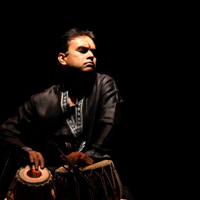
Two-time Grammy nominated tabla player Sandeep Das is considered one of the leading tabla players in the world today. One of the disciples of legendary tabla maestro Pandit Kishan Maharaj ji of the Benaras Gharana, his initiation into tabla was with Pt. Shiv Kumar Singh of Patna and he made his debut at age 15 with Sitar Maestro Pt. Ravi Shankar.
Peter Evans, trumpet
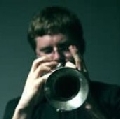
Peter Evans has been a member of the New York musical community since 2003, when he moved to the city after graduating from the Oberlin Conservatory with a degree in classical trumpet performance. He currently works in a wide variety of areas, including solo performance, chamber orchestras, performance art, free improvised settings, electro-acoustic music and composition.
